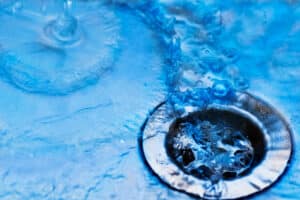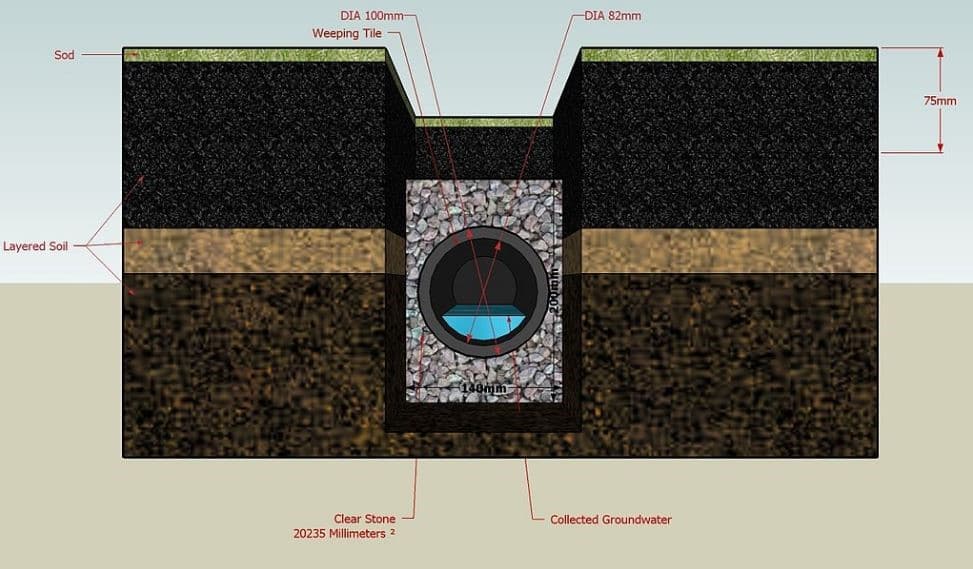Your Neglected Sump Pump
What is a Sump Pump
A sump pump is a device used to remove accumulated water in a sump basin or pit. Sump pumps are typically found in the basement of a home, where they are used to pump water out of the sump basin and away from the foundation of the house.

The sump basin is typically a hole or pit dug in the lowest part of the basement, and it is designed to collect water that may seep into the basement through the foundation or as a result of heavy rainfall or flooding. The sump pump is placed in the sump basin and is designed to automatically turn on when the water level reaches a certain point. The pump pumps the water out of the basin and away from the house through a discharge pipe.
Sump pumps are important in preventing water damage to a home’s foundation and basement, and they are often used in areas prone to flooding or heavy rainfall.
One of the most overlooked components in residences today is below ground level and works well – until it doesn’t. I am speaking of the almighty sump pump.
But first, a history lesson:
French drains, as they are frequently called, have very little to do with the country in their name. French drains are an American invention. They were popularized by Henry Flag French (1813-1885), born and raised in Concord, MA. They were developed to respond to the homes built in the late 1700s and 1800s before foundations were constructed out of reinforced concrete.
The results were flooded rooms, most basements, of some of the more critical of the local people.
Here is an early drawing of the basic French drain still in use today.

As you can see, the objective was relatively simple. Create a route around the entire perimeter for excessive rainwater, which had found its way into the home, another way out. In the beginning, a hand pump was used to reduce the water level in the home back, which had been captured in a tank designed to handle large amounts of water run-off. The holding tank would then be pumped outside the home, often some distance, to avoid a return creep.
Installing a French drain around the inside perimeter is most commonly done after the house has been built. This is most commonly done in response to a wet basement or before performing a basement finish. To install this kind of drain, the perimeter of the basement floor is jack-hammered down to the footing, and the concrete is removed. A layer of stone is laid down, and a perforated drain pipe is laid on top. Water is collected from the basement wall floor joint as it enters, and a pump is installed to remove water from the house and away from the foundation.
Except for recent “Storms of the Century,” such as Hurricane Sandy in 2012, drainage of excess water was handled by pumps or, more accurately, Sump Pumps. Sump Pumps often was attached to a battery backup system to assist in a short time loss of power while rainwater or storms continue. I’ve known people who have kept up to 4 batteries ready for their sump pump, just in case the power was lost for a significant period.
Don’t ignore this important feature of keeping your basement dry, even in the most torrential storms. Assuming you don’t have a neglected sump pump, they will typically last 5-10 years or more. An easy way to check (assuming your pump was installed so it does NOT go into the sewer line, which is a statewide violation) is to wait for a string storm and look for a piece of plastic (most often gray PVC) or pipe pumping water from the inside of your home to the outside. Battery boxes typically sit on a shelf (often homemade). A quick check of the battery’s output will determine if the right voltage is present to drive the flotation device to expel excess water.
Essential Things to Consider when purchasing a Sump Pump or its Replacement:
- Get the right size to support your home. Don’t be fooled by low-cost alternatives to those recommended by your plumber.
- Proper Installation must be conducted by trained personnel. Not only is the right size pump necessary, but the discharge pipe, as the name implies, is the tube designed to push the excess water from your home. In a phrase – size matters!
- Float failure and switch failure. As the “pit” or tank fills, a floatation device rises with the water to turn on a switch to start the pumping action. It floats in the tank until the water level exceeds the safety point, in which case the switch is lifted and activates the pump. If you’ve one of the lucky ones not to have to rely on your sump pump -GREAT! But do get fooled into complacency. At least once a year, preferably twice, using a hose or bucket, fill the “pit” so that the switch is lifted and you can feel confident you’re probably safe from a basement flood. But don’t forget, if you lose power for a significant period, you’ll need to rely on your battery backup, so make sure the battery is also fully charged and ready for service.
- Be extra careful during the winter months. A frozen water removal tube is equally useless. If a freeze is coming, and there is water in the tube, odds are it won’t freeze since its moving water is usually picking up some heat from the home as it travels and thus is unfrozen. But a sudden freeze overnight can make it useless. Check! – Don’t Guess.
Maintenance Tips:
White vinegar poured into the sump pump tank/pit and activated by manually pulling up the float switch until empty will remove any debris or potential clogs. Once or twice a year, give your sump pump a nice salad dressing sans the oil.
What do you do when you don’t install it?
Call Muccia Plumbing, Heating & AC at 201-343-1414. For a small fee, we will inspect the current status of your unit. Most, if not all, pumps have a date stamp on the label to let our techs know when it was installed. If it’s more than ten years old, it still may work fine. But following the manufacturer’s procedures, the Muccia Plumbing, Heating & AC tech will carefully advise you of all your options, choices, and costs. It’s a small price to pay for peace of mind.
Still need help? No sweat. Call Muccia Plumbing, Heating & AC at 201-343-1414 or click the following link mailto:info@mucciaplumbing.com
About Muccia Plumbing, Heating & AC
Exclusively Serving Bergen County, New Jersey
Michael Muccia is a Master Plumber and the owner and operator of Muccia Plumbing, Heating & AC. Muccia Plumbing, Heating & AC is a full-service Heating, Ventilation, and Air Conditioning (HVAC) service company based in and serving Bergen County, NJ, since 1978. The Muccia Plumbing, Heating & AC team of trained and certified service technicians offers various services, including general plumbing and heating maintenance, for residential and commercial clients.
Whatever your plumbing, heating, air conditioning, or ventilation needs are, it’s easier with Muccia Plumbing, Heating & AC. We treat our customers, large and small, with the best service in the industry. We know you have a choice when considering an HVAC company, and no matter what we do for you, we treat it as the most crucial job in our history. Our experience proves that we know how to work efficiently, which keeps costs low, uses only the best components within budget, and stands behind the work we do.
Muccia Plumbing, Heating & AC has locations in the following areas:
Hackensack | Hillside | Ramsey | Waldwick | Maywood | Tenafly

